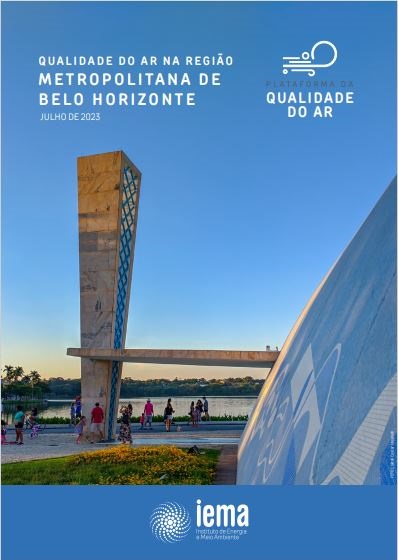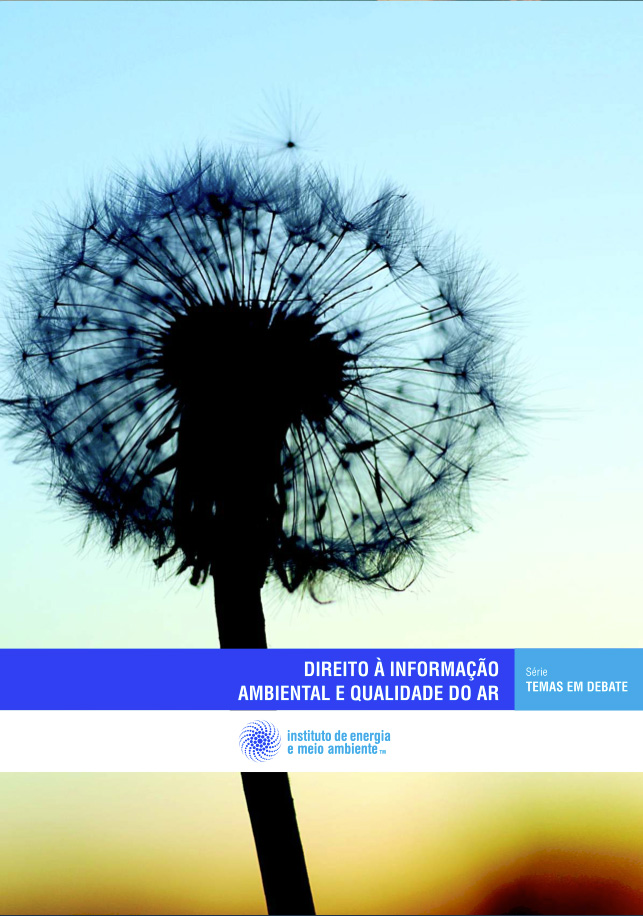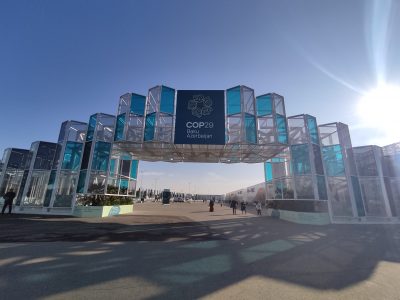What is the impact of the pandemic on public transport in the city of São Paulo? Launched on September 22, World Car-Free Day, the new online tool Bus Monitor SP (Monitor de Ônibus SP) of Instituto de Energia e Meio Ambiente (IEMA), shows that the average speed of buses in the city increased during the lockdown adopted due to the COVID-19 pandemic. As of March, with the decrease in the number of people and vehicles moving around São Paulo, public transport was able to circulate more efficiently, reducing by 52% the carbon dioxide (CO2) emissions, one of the causes of global warming, on an average business day in April, when compared to an average business day in February. Employing the same comparison, the emission of particulate matter (PM), formed by soot and other solid or liquid particles suspended in the atmosphere that can cause cardiorespiratory problems, was reduced by 51%. The emission of nitrogen oxides (NOx), the pollutants responsible for lung problems, was reduced by 56%.
Monitor de Ônibus SP was created to assist in the monitoring of greenhouse gas (GHG) and pollutant emissions from buses in the city of São Paulo. It helps to check whether operators and the government will be able to halve the CO2 emissions of transport by bus from São Paulo — by 90%, those of PM, and by 80% of NOx — by 2028, based on the year 2016. Those commitments are expressed in Municipal Law 16802 of 2018, which is about reducing public transport emissions in the city. “Monitor de Ônibus SP is a tool that processes the city’s open data and provides agile and accessible analysis for society to monitor the level of transport supply, the flow of the operation, and emissions. With that, we aim to contribute to having an inclusive, quality, and non-polluting public transport in São Paulo,” said David Tsai, one of its creators. Learn more about the tool at energiaembiente.org.br/onibus-sp
In the pandemic, buses began to circulate faster throughout the day. In the first week after the official start of lockdown in São Paulo, on March 24, the average speed of buses during peak hours, between 7 and 10 in the morning, reached 22 km/h. At the beginning of 2020 (in the pre-pandemic period), it was 32% lower (15 km/h). Recently, when people began to return to the streets, but without previous circulation levels restored, an average speed of 19 km/h was observed. “The particulate matter emitted during April, the height of the lockdown in São Paulo, fell 42% in relation to the total emitted in February,” said Felipe Barcellos e Silva, IEMA’s researcher. This was due to the reduction in the fleet in circulation and the increase in the average speed of the buses that remained running.
At a higher speed, they spend less time in traffic and become more efficient, emitting fewer pollutants per kilometer traveled. For each kilometer traveled by public buses in February, more pollutants and GHGs were emitted than for each kilometer traveled during the lockdown. The speed improved mainly for two reasons. With fewer cars on the streets, buses traveled with less competition on the roads. Less crowded stopping points, with fewer passengers entering the vehicle at once, also affected the average speed of trips, as buses were stopped for boarding for less time.
It is also interesting to note that the concentrations of particulate matter in the air measured by the Environmental Company of the State of São Paulo (Companhia Ambiental do Estado de São Paulo – CETESB) in the first half of April in the city of São Paulo, were remarkably below the measurements of the previous three years, according to an article published by IEMA in May. The reduction in bus activity and the increase in traffic speed, along with changes in the behavior of other sources emitting pollutants, may have contributed to the brief improvement of environmental quality in the city. It all points out an already widely known fact, that is, the importance of investing in the quality of urban mobility as a way to reduce air pollution.
Just the increase in speed is excellent news. It takes passengers faster to get to their destinations, reduces work stresses of drivers and tariff collectors, and even gives better predictability to the service, facilitating the management of the operation by companies. In addition, vehicle engines operate more efficiently under free circulation conditions. Constantly stopping in traffic wastes burned fuel. Therefore, higher speed is synonymous with lower operating cost, something essential to have tariff moderation — fundamental to ensuring the right to transportation.
Fleet reduction and passenger stabilization
Monitor de Ônibus SP also showed that as of April 1, there was a sudden reduction in the bus fleet in the city of São Paulo. “That decision was soon perceived as mistaken because the buses became more crowded, endangering the health of passengers, drivers, and tariff collectors,” recalled Silva. After that experience, it was decided to increase the supply of buses again, even with the average daily passenger 67% lower than usual. Today, the fleet of buses in circulation on business days is on average 12 thousand vehicles, while this number reached 13.8 thousand in the pre-pandemic days and only 6.8 thousand at the beginning of the pandemic.
The data also show that from April to June, 237 million passengers used public transport. In the same period last year, this number was 674 million, almost three times higher than the current one. That shows that even during the height of the lockdown, a significant amount of passengers continued using the bus system. This information highlights the importance of public transport, which was elevated to a social right in 2015, as provided for in article 6 of Brazil’s Federal Constitution. Many people do not have access to other means of transportation except the bus. Thus, the cities that prohibited the circulation of public transport during a period of lockdown directly affected the population that needed that means of transport, harming their right to mobility.
Monitor de Ônibus SP
Monitor de Ônibus SP is an independent monitoring tool for the bus system in São Paulo, designed by IEMA and developed with Scipopulis. The tool’s objective is to foster debates and actions for the improvement of São Paulo’s bus transport system. It estimates the emissions of the municipal bus transport system in the city of São Paulo. The calculation of the estimate uses GPS data transmitted by devices installed on all São Paulo buses that, in the second half of 2019, totaled more than 14 thousand, constituting one of the largest public transport fleets in the world.
The tool seeks to indicate whether the emissions of all those buses are decreasing at a pace compliant with the fulfillment of the goals stipulated in the Climate Change Policy of the city of São Paulo. In addition, it is possible to monitor the evolution of indicators of quality and use of the service provided, such as average speed, the total fleet of vehicles, supply of seats, and the number of passengers transported. Key indicators to ensure access of the entire population to transport and, consequently, to the city. It is noteworthy that, in large Brazilian cities, such as São Paulo, the main emitters of pollutants and greenhouse gases (GHG) are private transport. Therefore, by emitting less per passenger transported, public transport is a fundamental part of the solution to the problems of air pollution and GHG emissions in those regions.















